Taiko no Tatsujin: Rhythm Festival - Switch Review
"The purest idea of a rhythm game."
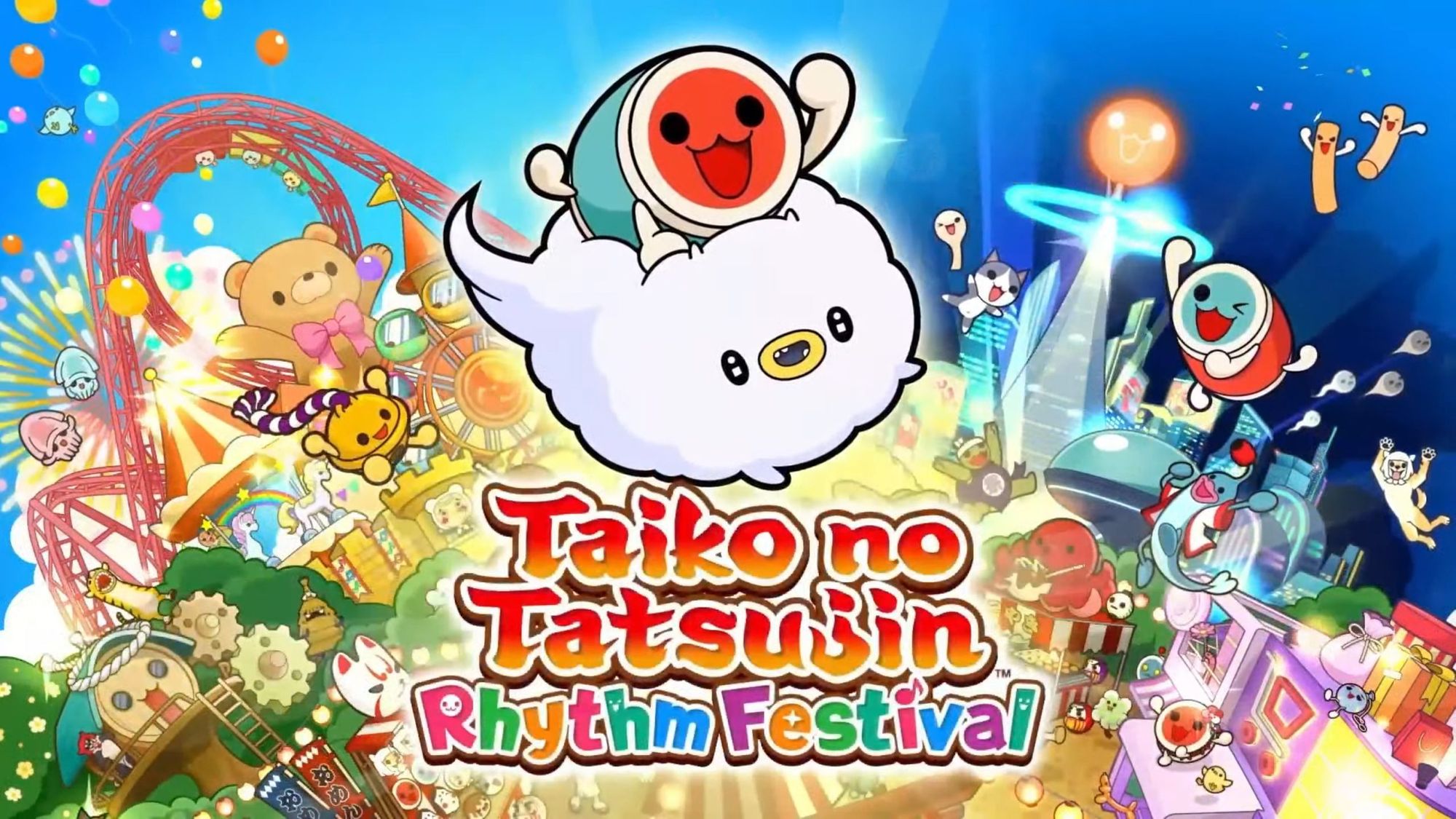
The newest entry into the Taiko no Tatsujin series comes to the Nintendo Switch in the form of Taiko no Tatsujin: Rhythm Festival. A long running rhythm game series mainly featured in Japan, but has had a few console releases in English. Brought to us by Bandai Namco, it has a colourful, joyous and cutesy aesthetic with an extremely impressive track list that includes over 500 songs (and growing). Grab your drumsticks, and DON your way to becoming a Taiko Master!
The Good
The gameplay of the basic Taiko no Tatsujin game mode has remained largely unchanged, and it is very accessible. Essentially, there are only four buttons. Two of them are the centre of the drum, making a DON sound; two of them are at the edge of the drum, making a KA sound. Most notes will be either DON or KA, with some notes needing you to hit both DON buttons, or both KA buttons respectively. Other than that, you will see drumroll notes, which ask you to just mash any of the buttons as fast as you can. The controller uses all of its buttons, but they all function in one of these two ways. In a world where I personally feel rhythm games are becoming a bit too complex (I can’t seem to wrap my head around the Persona rhythm games), this simplistic design makes things very relaxing when just starting. However, that does not mean that the game is relaxing later down the line. Once you start unlocking more songs and have gained a sure grasp of the game and its controls, it demands a lot from you in terms of speed and changing notes, giving a healthy amount of challenge.
Taiko no Tatsujin: Rhythm Festival’s song selection is varied and expansive. Original series songs make their appearance as they always do, however there are a large number of entries from other media. Anime songs like “Gurenge” from Demon Slayer, “Guren no Yumiya” from Attack on Titan and “A Cruel Angel’s Thesis” from Neon Genesis EVANGELION make their appearance. “He’s a Pirate” from Pirates of the Caribbean is also in the game (it’s the series theme). Classical music like Beethoven’s “Symphony no.5”, and Franz Schubert’s “Three Marches Militaires” are also here. Music from video games like The Legend of Zelda’s main theme, “Life will Change” from Persona 5, “Megalovania” from Undertale, and the Katamari Damacy main theme can be found here too. Not to mention a selection of Vocaloid songs. As you can see, from this SMALL selection I’ve provided, there is a HUGE variety of songs to choose from.
Taiko no Tatsujin: Rhythm Festival also provides a bevy of side content in the form of party games, and an online multiplayer that really expands the game past its basic formula. This gives a lot of options to keep you coming back. My personal favourite is the Great Toy War, a one vs. one game mode where the better you perform at a song, the more you sabotage your enemy to make it harder for them to perform. Another wonderful feature in the side content is a practice mode. Here, the songs are broken up into equal chunks, and when you play through the song, you are graded in each section so the game can tell you what you need to improve on. You can also select a specific section of the song to practice in order to help you get over the humps that get you down when playing the song properly. This is a wonderful addition to a rhythm game, and one that I personally think should become an industry standard.
TL;DR
- Accessible gameplay with a healthy amount of late-game difficulty
- A wide variety of music
- A good amount of side content
- A wonderful practice mode
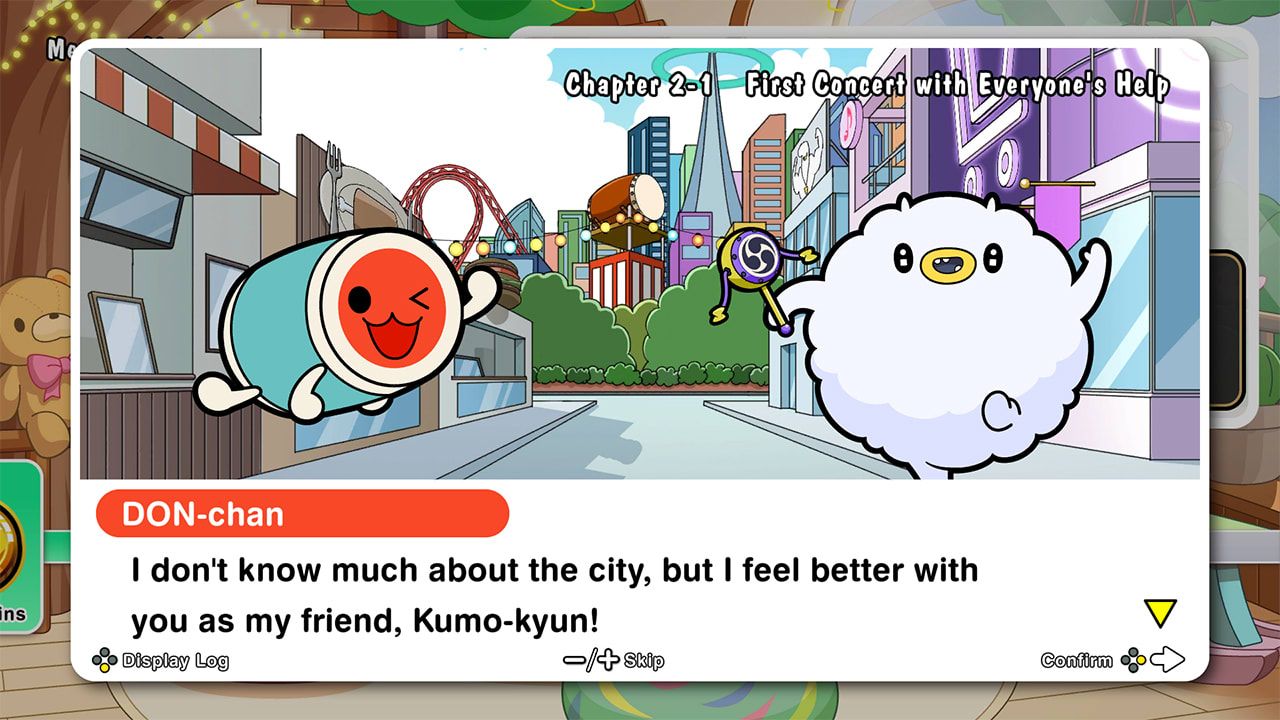
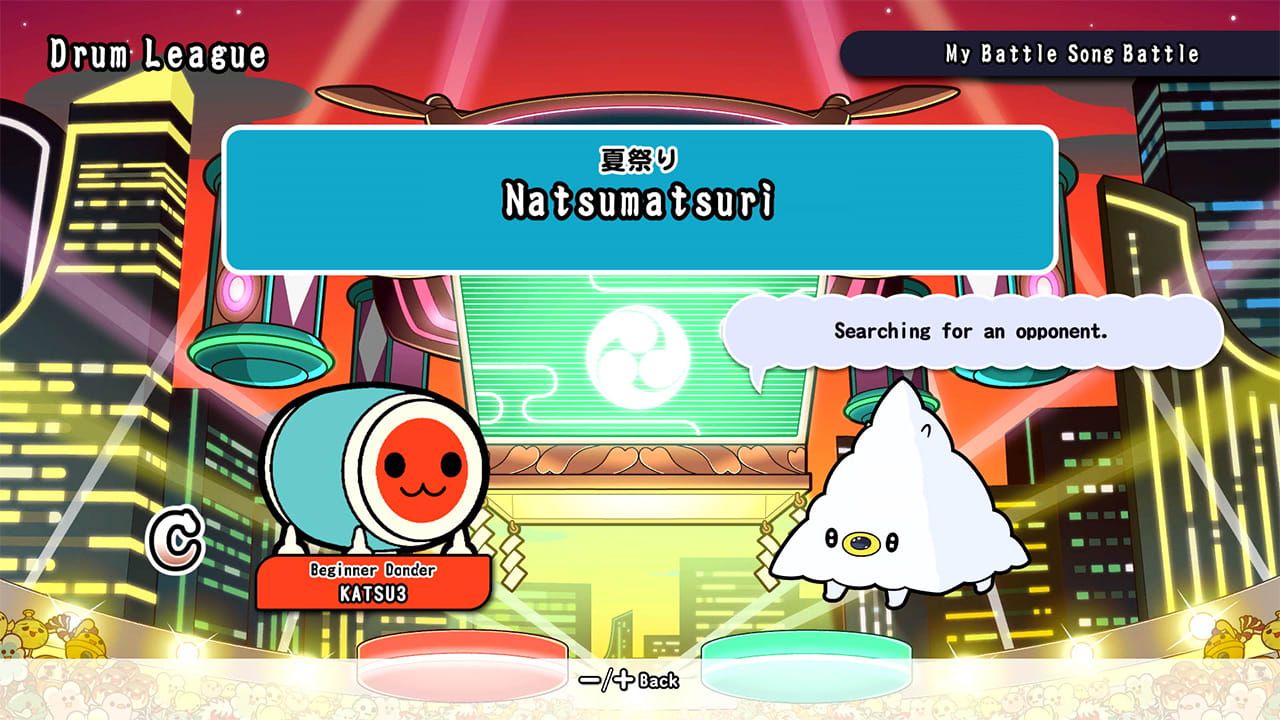
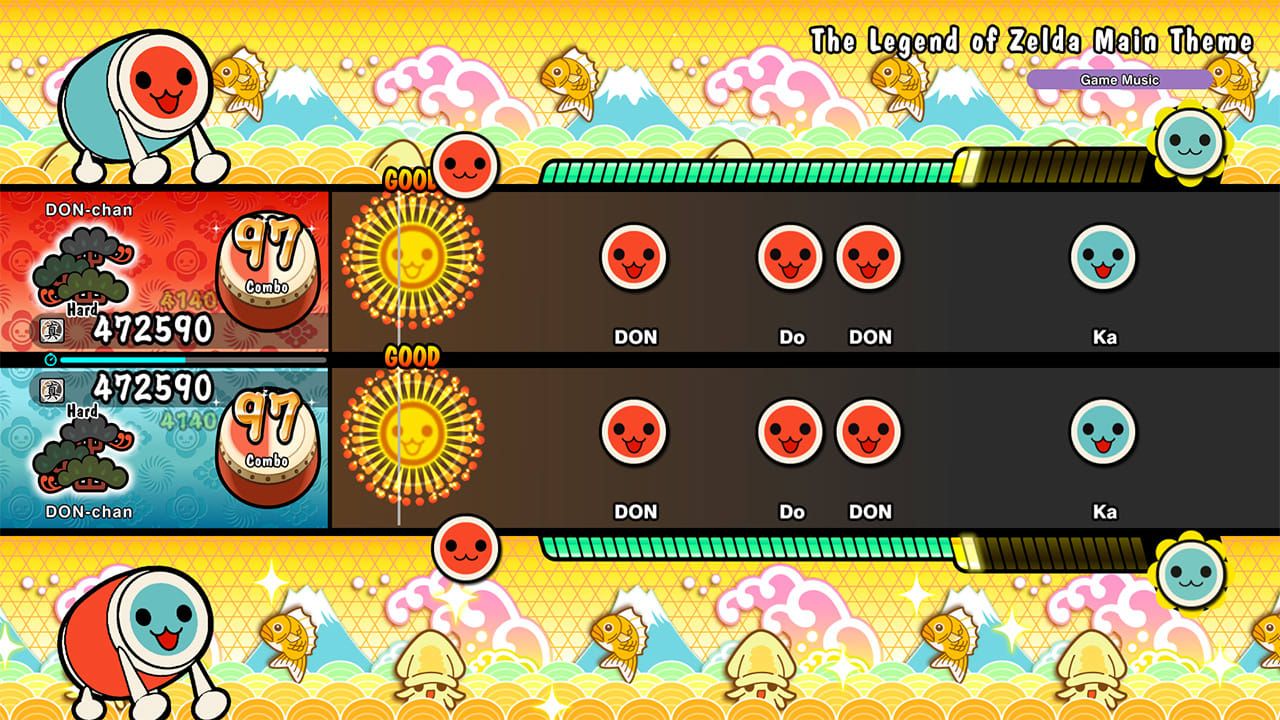
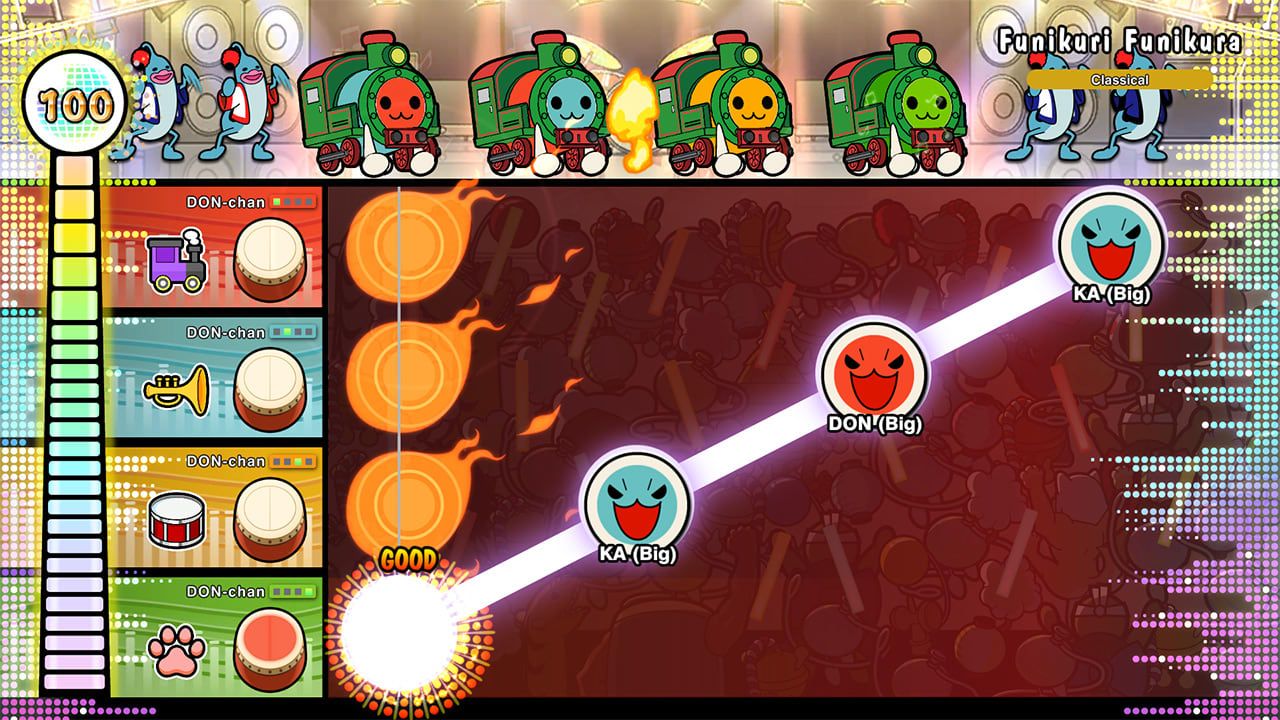
The Bad
There isn’t a lot negative to say about Taiko no Tatsujin: Rhythm Festival. The game has a number of control schemes to use, one of them being motion controls. On face value, they are executed well, although there is a learning curve to timing when you use it; however, my complaint with them is how they affect gameplay. The motion controls do not differentiate between the two types of notes. Swinging the joycon like a drumstick will hit a note regardless of what the note is. I feel that this introduces a level of ease into the game that shouldn’t be there because it essentially makes a four button game (two DONS and two KAs) a two button game (Left swing and Right swing). In theory, if you’re fast enough, you could only swing one Joy-Con for every note except for the ones that require you to hit two DONs or KAs at once. A bit of a nitpick, but I did notice personally a marked increase in score when I used the motion controls over the button controls.
The game boasts a track list of over 500. Specifically it says “76 songs and hundred more online.” 76 songs is what the game comes with at base, and every song I listed above is included in that 76 count. There are a handful more to unlock, however I do not believe it reaches above 80 to 90. This “hundred more online” figure is behind a subscription-based paywall. My gripe is that it is a subscription. The vast majority of songs Taiko no Tatsujin has to offer sits behind a monthly fee, and personally, I do not like that. I do not mind a one time payment DLC, each song could be sold separately or perhaps in packs of ten, however Bandai Namco went the “game as a service” route and held an expanding list of songs hostage. This full list is just a tap of the shoulder button away on the base games song list, where one could be tempted by a very long list of songs. I will never play a game for long enough to justify a monthly payment, and I would personally not like that service to be there at all.
My other portion of this section is not a negative on the game, but a warning to the ready. This game has a very specific aesthetic, and that’s Japanese kids content. This game is very colourful, very bright, very happy, and very busy. So much so that I could easily see people being alienated from the game that do not like that aesthetic. No dialogue in the game is in any language but Japanese. Like I said, this isn’t a knock on the game, however I will admit that I would have LOVED this game when I was in high school, when I thought anime was the upper echelon of media, and I mistakenly (some might say racistly) idolised a false sense of Japanese culture based off of what anime portrayed.
TL;DR
- Motion controls that dumb down an already simple control scheme
- A subscription service to access 80% of the game’s content
- An aesthetic that might alienate players

Final Score: 8/10
Taiko no Tatsujin: Rhythm Festival is the purest idea of a rhythm game in my mind. It’s fun, fast-paced, and packed with a wide selection of wonderful music. While the majority of the content on offer is behind a monthly fee when you already pay close to full game price for it, 76 songs at base is still a long list of music to play through. The game is pure fun, unapologetically Japanese, and an all around great time for fans of rhythm games. It also introduces the two things that Ludwig Von Beethoven foolishly left out of his most famous work, dancing mascots and taiko drums.
Thank you for checking out our Taiko no Tatsujin: Rhythm Festival Switch review, thank you to Bandai Namco AU for providing the review code and thank you to our Patreon Backers for their ongoing support:
- Andrew Caluzzi (Inca Studios / Camped Out)
- Bel Cubitt
- NintenVania Podcast
- Rachelle Suri-Tucker
For more reading, check out our Dragon Ball: The Breakers review.
